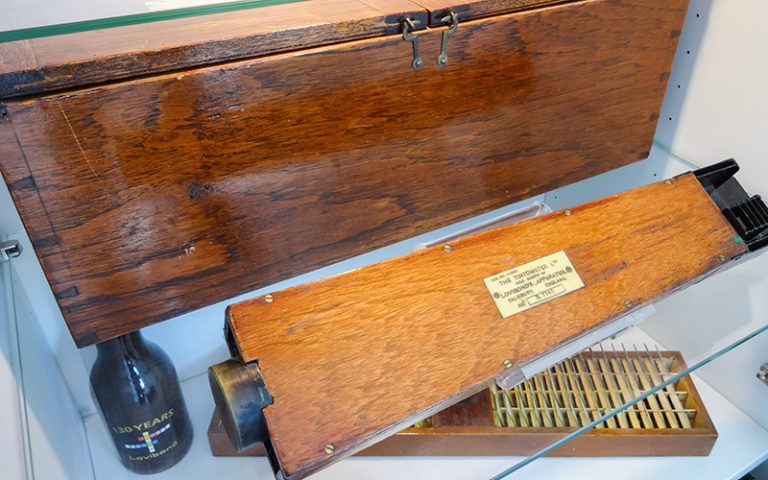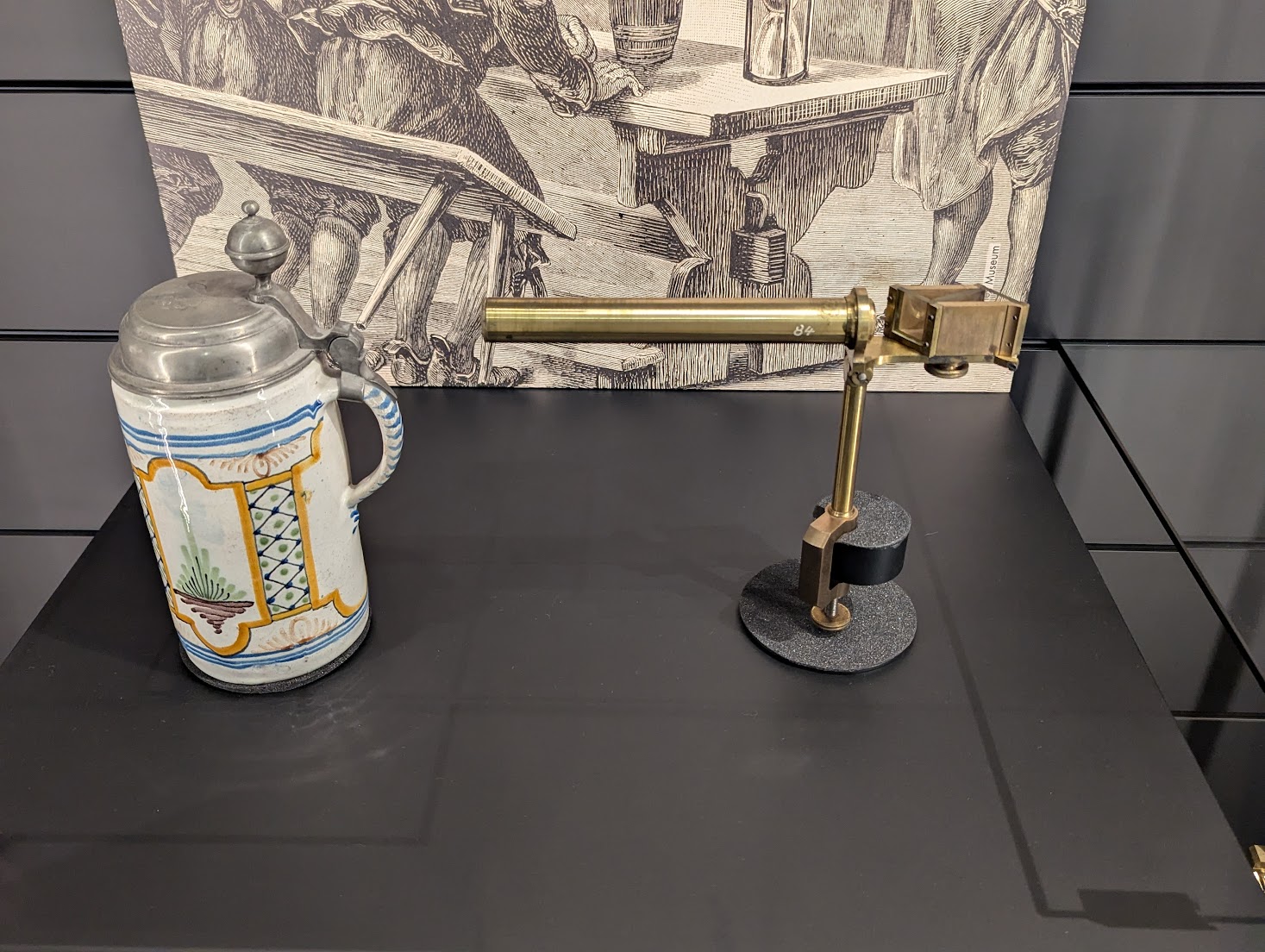Beer And Optics
Date: 2025-04-12
Last Updated: 2025-04-12
It is well known that Physicists have a special relationship with beer. There is just something magical about the amber fluid. Here I want to discuss the ways in which beer and the desire to improve the brewing process furthered humanities analytic chemistry techniques by clever applications of optical physics! We will be discussing the analytic colourimeter, and the refractometer.
1 The Analytic Colourimeter
The story of the colorimeter comes from the son of a brewer Joseph lovibond.
The brewery faced a difficult problem. How do you get the same level of roast every single time? See brewers by their malts and grains at different levels of roast, from ashy dark, to light blonde, and mix them in the wort to achieve the desired carbohydrate/sugar profile. Getting the recipe consistent is difficult, since you cannot just add the same amount of each ingredient every time, since the roast levels are going to be inconsistent
Lovibond supposedly came to his solution while long through the stained glass windows of his church in 1880 (This story strikes me as something made up for marketing, but I don't have proof it is fake, so let's roll with it). Lovibond realized that you can achieve a continuous gradient of colours by varying the amount of dye* in the glass. From the he created the Lovibond scale, a series of stained glass sheets of defined dye content. The brewer may then compare the colour of their beer to the series of glasses until a match was found.

Credit: The Lovibond Company Website
The lovibond company still exists, and still sells colourimetry equipment for use is science and manufacturing. The company still exists, and still sells instruments for colour measurement, and water analysis. They even still sell an updated version of Lovibond's Device

Credit: The Lovibond Company Website
2 The Refractometer
If you know anything about Bavaria, you know that they take beer seriously. So seriously they have laws about its contents, and have had protests and riots about its price. You may also know about the rich history of broader German physics. Well I'm 1841 these two areas of excellence crashed together.
While the Bavarian purity laws were in effect, there was little way for the consumer to be confident they received the product they were paying for. Carl August Steinheil, a physicist in Munich established a test in 1841, after inventing the refractometer and combining it with the already existing hydrometer.
Just like light bends through a prism, it also does through a liquid. Go and check with a glass of water now. The refractometer just measures how much the light is bent. This measures the "refractive index" of the liquid. This is useful, since how much a liquid bends the light depends on how much STUFF is in the liquid. Sugars, dextrose etc, and how that "stuff" interacts with light. If you want a more in depth analysis of refraction, I would recommend checking out this explanation by friend of the site Solaria.
A hydrometer, a similar tool which already existed, measures the density of a liquid. I.E. the mass of all the stuff dissolved in the liquid. It does this by placing a tuned glass weight to a column of the liquid and measuring how buoyant the rod is in that particular fluid. The more dense the liquid, the higher it will float.
After measuring both the density of the beer and its refractive index it is possible to determine both the alcohol content and the extract of the beer.
It turns out Steinheils method was not popular in its time, and he cause some controversies trying to advertise its use over other methods.

A photo I took of Steinheil's refractometer while visiting the Deutsche Museum
Today, refractometers are used in analysis in a variety of areas. Coffee nerds like using them to measure extraction efficiency, and confectionry manafactureers use them to measure sugar concentration.
Authors Note: I was curious about Steinheils Optical beer test, there isn't a lot of information on the English speaking web about it. I sent an email to the museum curator asking for some more details. I will update this page if I get any interesting materials from them.
3 Further Reading
Mark Denny's Froth! The science of beer is a great example of physicists (over) analysing the ambrosia.